50+ Sample Compliance Checklists
-
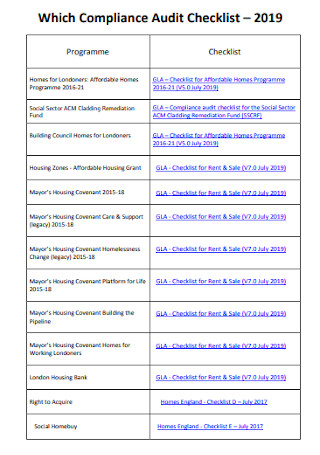
Compliance Audit Checklist Example
download now -
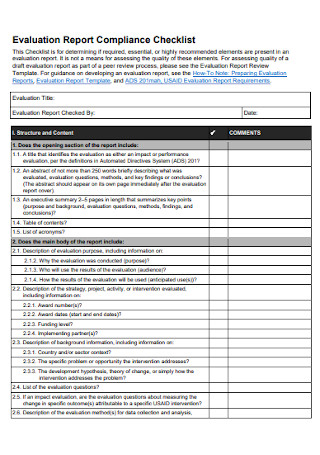
Compliance Checklist Report
download now -
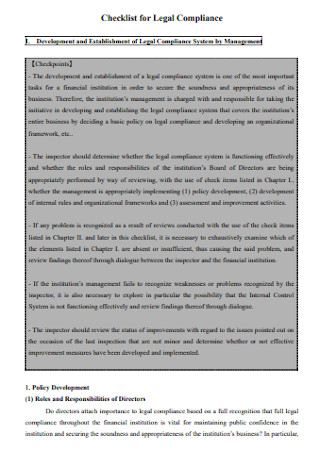
Checklist for Legal Compliance
download now -

Services Compliance Checklist
download now -
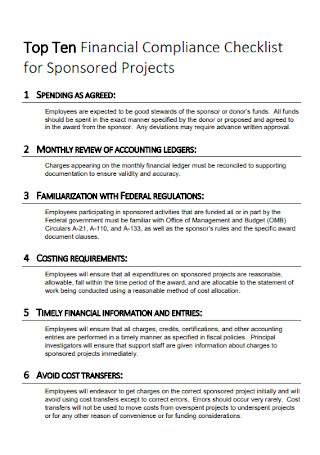
Financial Compliance Checklist
download now -
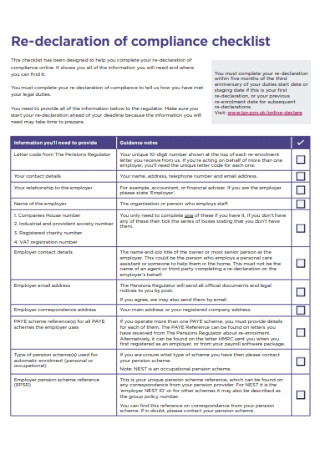
Re declaration of Compliance Checklist
download now -

Compliance Monitoring Checklist
download now -
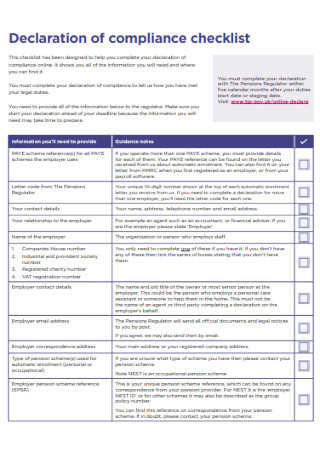
Declaration of Compliance Checklist
download now -
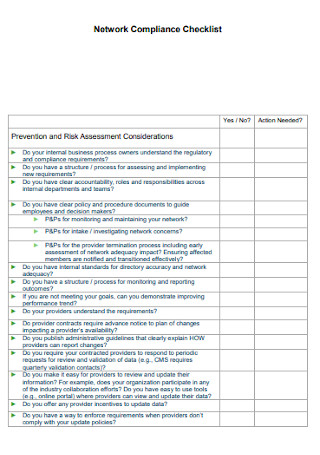
Network Compliance Checklist
download now -
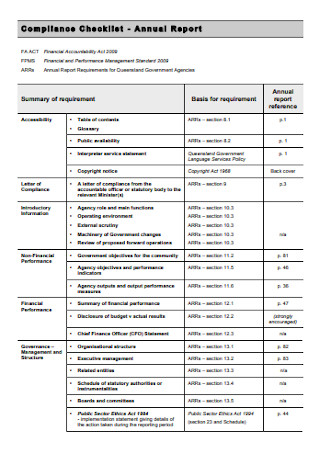
Annual Compliance Checklist Report
download now -

Installment Contract Compliance Checklist
download now -
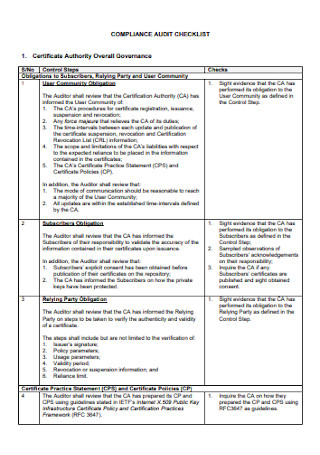
Compliance Audit Checklist Example
download now -
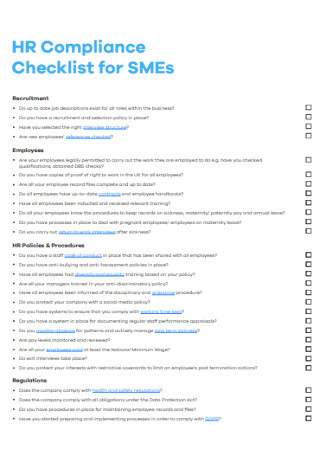
HR Compliance Checklist
download now -
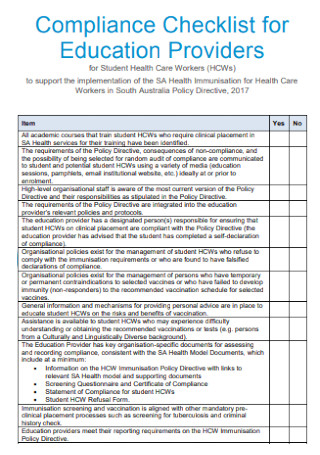
Compliance Checklist for Education Providers
download now -

Compliance Checklist for Customers
download now -
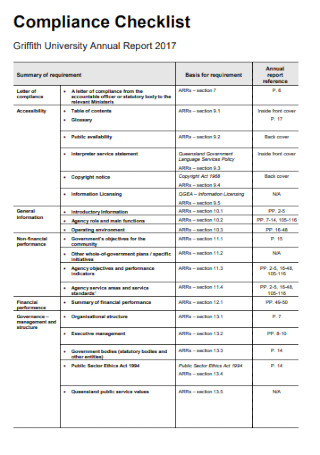
Sample Compliance Checklist Template
download now -
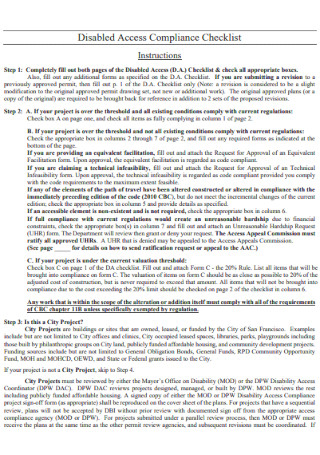
Disabled Access Compliance Checklist
download now -

Compliance Payroll Checklist
download now -
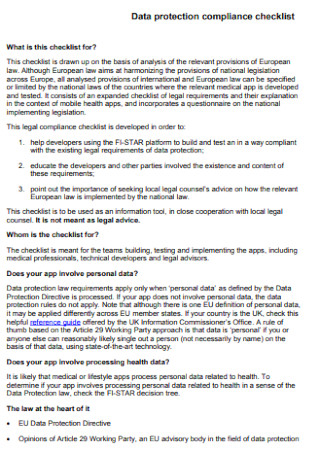
Data Protection Compliance Checklist
download now -
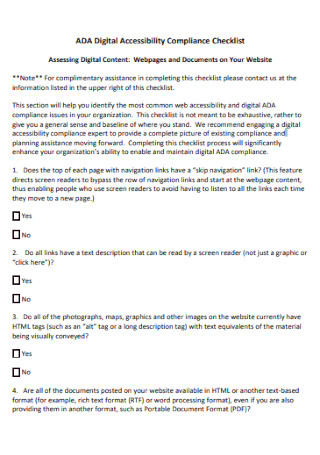
Digital Accessibility Compliance Checklist
download now -
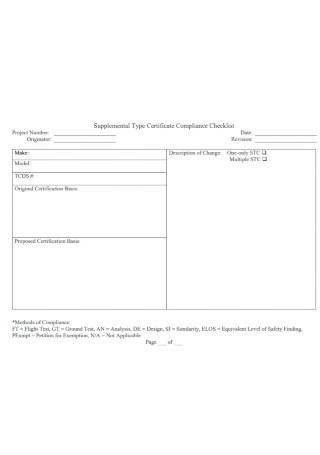
Certificate Compliance Checklist
download now -
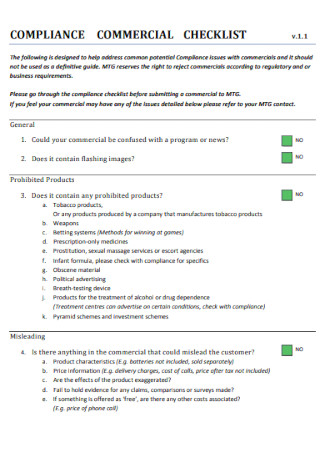
Compliance Commercial Checklist
download now -

Contract Compliance Checklist
download now -
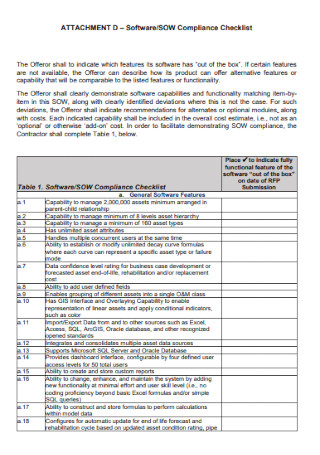
Software Compliance Checklist
download now -
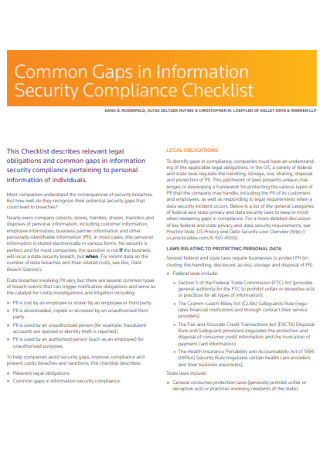
Security Compliance Checklist
download now -
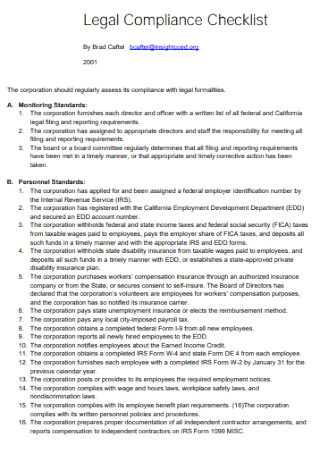
Legal Compliance Checklist
download now -

Health and Safety Compliance Checklist
download now -
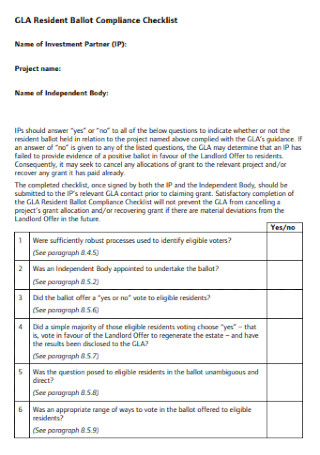
Resident Ballot Compliance Checklist
download now -
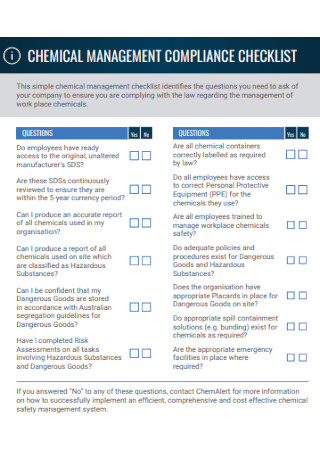
Chemical Management Compliance Checklist
download now -

Social Compliance Checklist
download now -
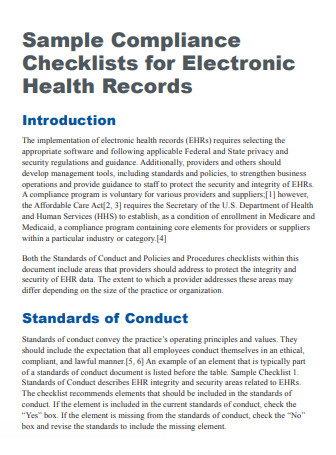
Compliance Checklists for Health Records
download now -
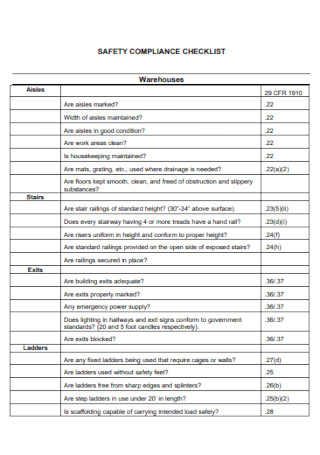
Safety Compliance Checklist
download now -
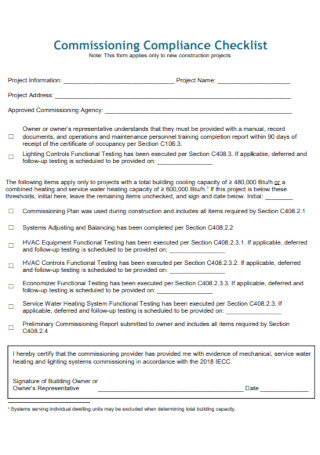
Commissioning Compliance Checklist
download now -
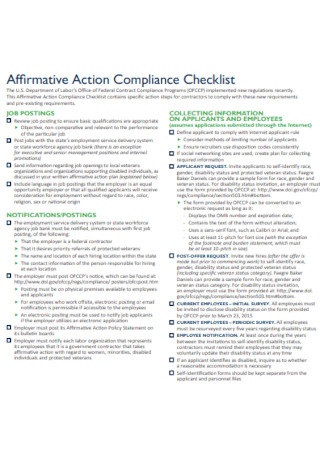
Affirmative Action Compliance Checklist
download now -
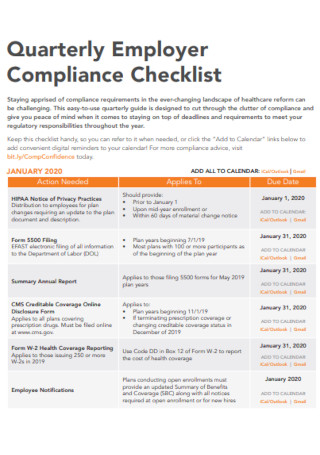
Quarterly Employer Compliance Checklist
download now -
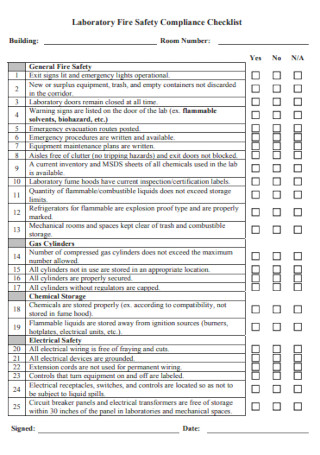
Laboratory Fire Safety Compliance Checklist
download now -

Permit Compliance Checklist
download now -
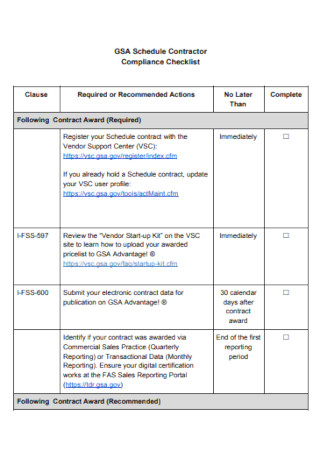
Contractor Compliance Checklist
download now -
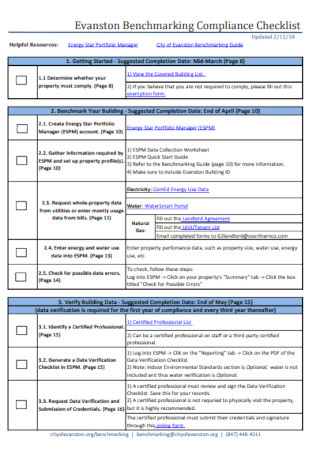
Bench-marking Compliance Checklist
download now -
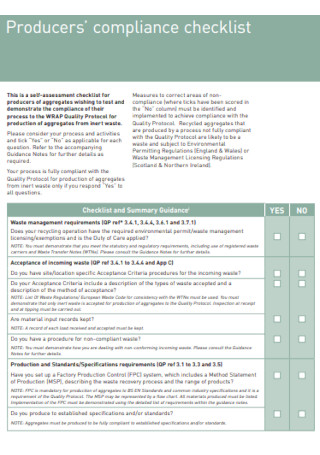
Producers Compliance Checklist
download now -
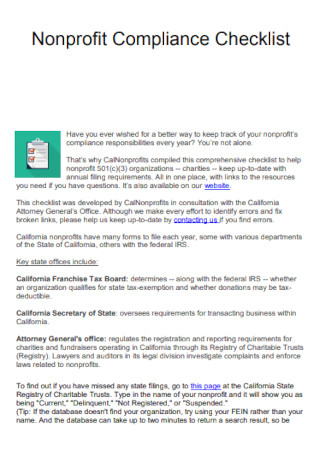
Nonprofit Compliance Checklist
download now -
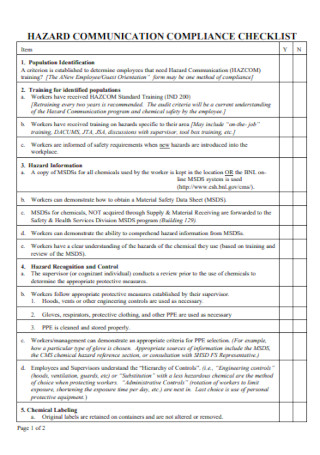
Communication Compliance Checklist
download now -
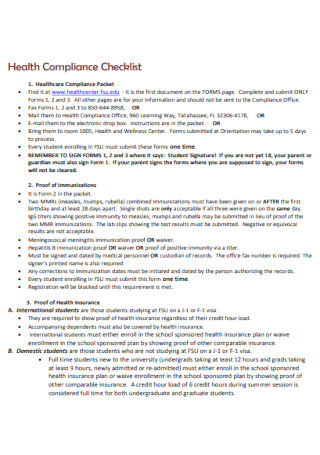
Health Compliance Checklist
download now -
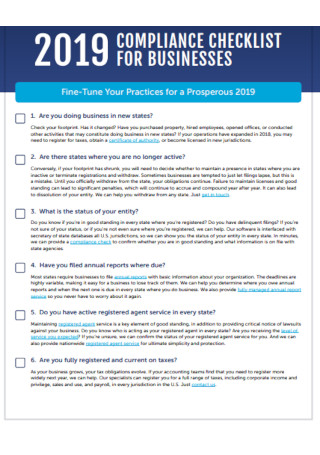
Compliance Checklist for Businesses
download now -
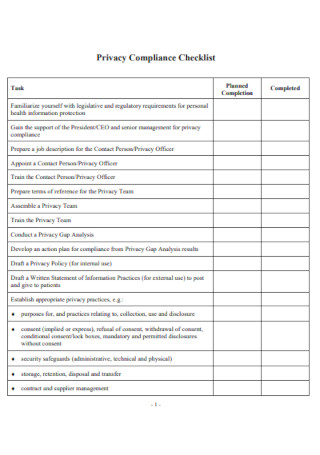
Privacy Compliance Checklist
download now -
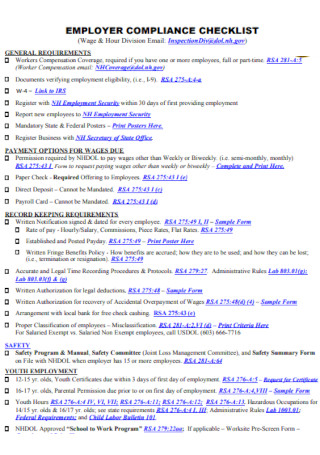
Employer Compliance Checklist
download now -
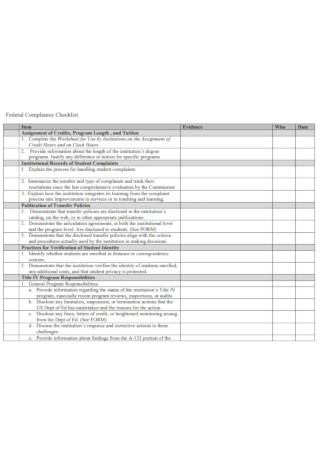
Federal Compliance Checklist
download now -
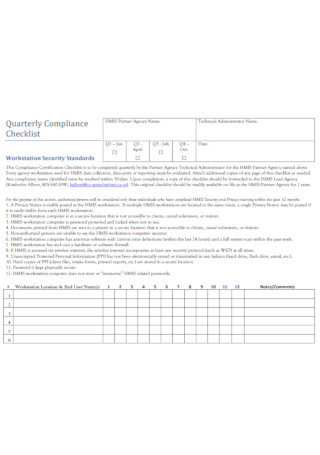
Quarterly Compliance Checklist
download now -
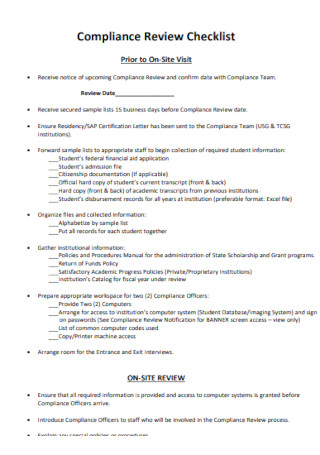
Compliance Review Checklist
download now -
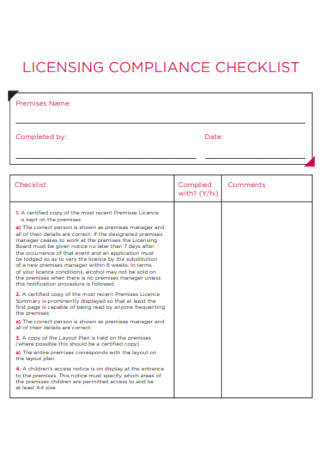
Lisencing Compliance Checklist Template
download now -
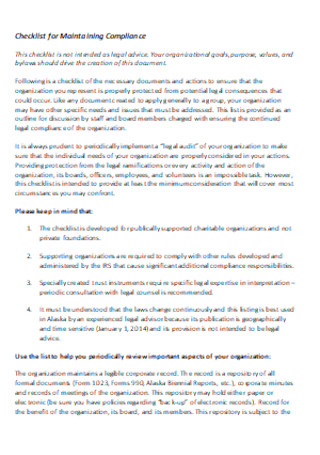
Checklist for Maintaining Compliance
download now
FREE Compliance Checklist s to Download
50+ Sample Compliance Checklists
What Is a Compliance Checklist?
Why Are Compliance Checklists Important?
The Different Phases of Compliance Audit
The Types of Compliance Checklists
How to Make a Compliance Checklist
FAQs
Why should compliance audits be performed?
How likely will compliance team budgets increase?
How do you conduct a compliance audit?
What Is a Compliance Checklist?
First of all, a compliance audit is any organization’s systematic monitoring process if ever they comply with the predetermined standards set by authorities or governing bodies. And the compliance checklist is the official document or tool used by internal and external auditors to check if a business adheres to the necessary regulations, policies, and standards. Once the auditing process is done, a compliance report follows to confirm whether the results are excellent or dismal.
According to Statista’s 2020 research survey, only around 17% of risk and compliance professionals worldwide expected the compliance team budget to greatly increase. Meanwhile, 51% of them expected a slight increase.
Why Are Compliance Checklists Important?
Indeed, a compliance checklist exists for determining whether organizations comply with the necessary standards and qualities or not. But why should they comply in the first place? And how can the checklist improve the work of auditors or help an organization? Here are important reasons why you should use compliance checklists:
To Lessen Possible Risks
Any type of organization has loads of potential risks. And a compliance checklist streamlines your company’s risk management action plan since it can help identify the risks and gaps in your organization. After determining such risks, finding the right solutions to lessen, prevent, and manage them will follow. So you might as well comply with the standards not only because it is required but is also for the good of your business to remain in a risk-free environment.
To Standardize Processes
Don’t assume that your company is in stellar condition no matter what without even bothering to monitor its performance. Thanks to compliance checklists, it is convenient to ensure regular evaluation reports are done to standardize processes. Running an organization that goes according to standards will ensure that you provide top-notch services and stay successful in operations anyway.
To Have a Reliable and Easy-to-Follow Guide
Having a simple business checklist such as a compliance checklist is dependable because of how it gives you a step-by-step guide on how to conduct a compliance audit. Indeed, auditing is important but what if you forget certain steps or forget to measure a specific criterion upon evaluating? Since a compliance checklist enlists the items and criteria in an organized manner, you need not memorize every single detail from the checklist. Just refer to the document to avoid forgetting or missing any detail.
The Different Phases of Compliance Audit
You already know that compliance checklists are crucial to compliance auditing. But not having any knowledge about how the compliance audit works will make it difficult for you to adjust to the actual process. Hence, familiarize the concept of compliance auditing by getting to knows its different phases, as discussed below:
The Types of Compliance Checklists
You can’t use the same compliance checklist for every purpose because compliance checklists have a variety of types. One industry even has different requirements compared to another business. And if you need help distinguishing what makes a compliance checklist different from one another, here are the types of standard compliance checklists:
Compliance with Labor Laws
Compliance checklists focusing on labor laws and employment regulations are where strict investigation reports are done. That means the company should follow regulations set by the Department of Labor. An example is to audit the HR’s management performance, equality and anti-discrimination policies, and more.
Compliance with Health, Safety, or Environment
Also a very important form of compliance is by monitoring the health, safety, and overall environment of a company. For example, are the employees safe in the workplace? There could be hazardous factors at work that could lead to expensive compensation of victims and possible legal fees for endangering the health of certain workers. As much as possible, set health, safety, and work environment standards that go in accordance with the Occupational Safety and Health Administration (OSHA) regulations.
Compliance with Corporate Governance
Complying with the general corporate governance rules is essential to ensure your company has everything in control such as what your company owes to government entities and investors. This type focuses more on how the business runs, what corporate policies were observed, and the organization’s registration and financial statements.
Compliance with Data Security
A business may collect as much client information concerning sensitive data and data security compliance is necessary to protect the data from possible leaks, disclosure, or abuse. Otherwise, there could be confidential information being misused if no proper measures were taken to protect passwords, customer data, and other information requiring tougher access control.
How to Make a Compliance Checklist
Making a compliance checklist is not as difficult as it seems. And since you went through lessons of a compliance checklist’s definition, importance, phases, and types, you are more than prepared to create the checklist itself. Without further ado, here are the steps to create the best compliance checklist possible:
-
Step 1: Download a Sample Compliance Checklist Template
Get rid of the arduous process of making compliance checklists from scratch. Sample templates make your experience a lot more pleasant since most elements are already premade. Your only job is to personalize or change the content to make the checklist your own. You may choose from a range of options such as a regulatory compliance checklist template, maintenance compliance checklist for companies, compliance policy checklist template, or a template with a technical compliance sheet format. Select a template now!
-
Step 2: Determine the Type of Compliance Audit and the Things to Comply
What type of compliance audit are you going for? A clear statement of purpose towards the type of compliance audit checklist you will make later is essential so you would know what set of data to add to the document. For example, health/safety compliance checklists would mean you will write about the list of criteria to gauge an organization’s health and safety measures. And make sure the list of tasks and criteria added in the checklist is actually based on standards.
-
Step 3: Use Visual Organizers to Lay Out the Details
A compliance checklist does not only consist of long sentences and paragraphs. It is often short and straightforward with different symbols and visual organizers to present and arrange the details properly. An example is to use of a table or a chart to divide the compliance checklist’s elements per column or row. Another example is to use the Likert scale where the auditor either marks a row with strongly agree, agree, neutral, disagree, or strongly disagree in compliance auditing. Checkboxes and graphs are other similar examples of graphic organizers.
-
Step 4: Conduct an Easy-to-Follow Structure
Compliance checklists must be easy to read. That means the instructions, tasks, and criteria written there are straightforward and understandable. And you are guaranteed to achieve an easy-to-follow compliance checklist by observing a thorough assessment and rereading everything from start to finish if everything makes sense or can be simplified. Also, think of your audience because maybe the checklist is used for another auditor so it should work easily for who is meant to use it. Once you are glad about the outcome, stick to the compliance checklist every audit session.
FAQs
Why should compliance audits be performed?
Compliance audits can provide a safe workplace environment, boost productivity, mitigate penalties, maintain a positive reputation, and promise continuous business operations.
How likely will compliance team budgets increase?
Statista reported that 17% of risk and compliance professionals around the world expect a big increase in the compliance team budget. And at least 51% of them expected a slight increase.
How do you conduct a compliance audit?
A compliance review or audit can be done by the following steps:
- Appoint who performs the compliance audit.
- Set the initial planning and compliance audit objectives.
- Meet with the stakeholders.
- Assess existing procedures and controls.
- Conduct risk assessment.
- Analyze how operations work.
- Refer to external resources if applicable.
- Practice data protection.
A business itself should be as compliant as its people. And conducting regular compliance reviews with compliance checklists shows how much your organization is responsible and reverent with the law. Complying with the regulations and standards doesn’t have to be a stressful process. So waste no time and create your own checklist using sample compliance checklist templates to jumpstart the process. Download now!
